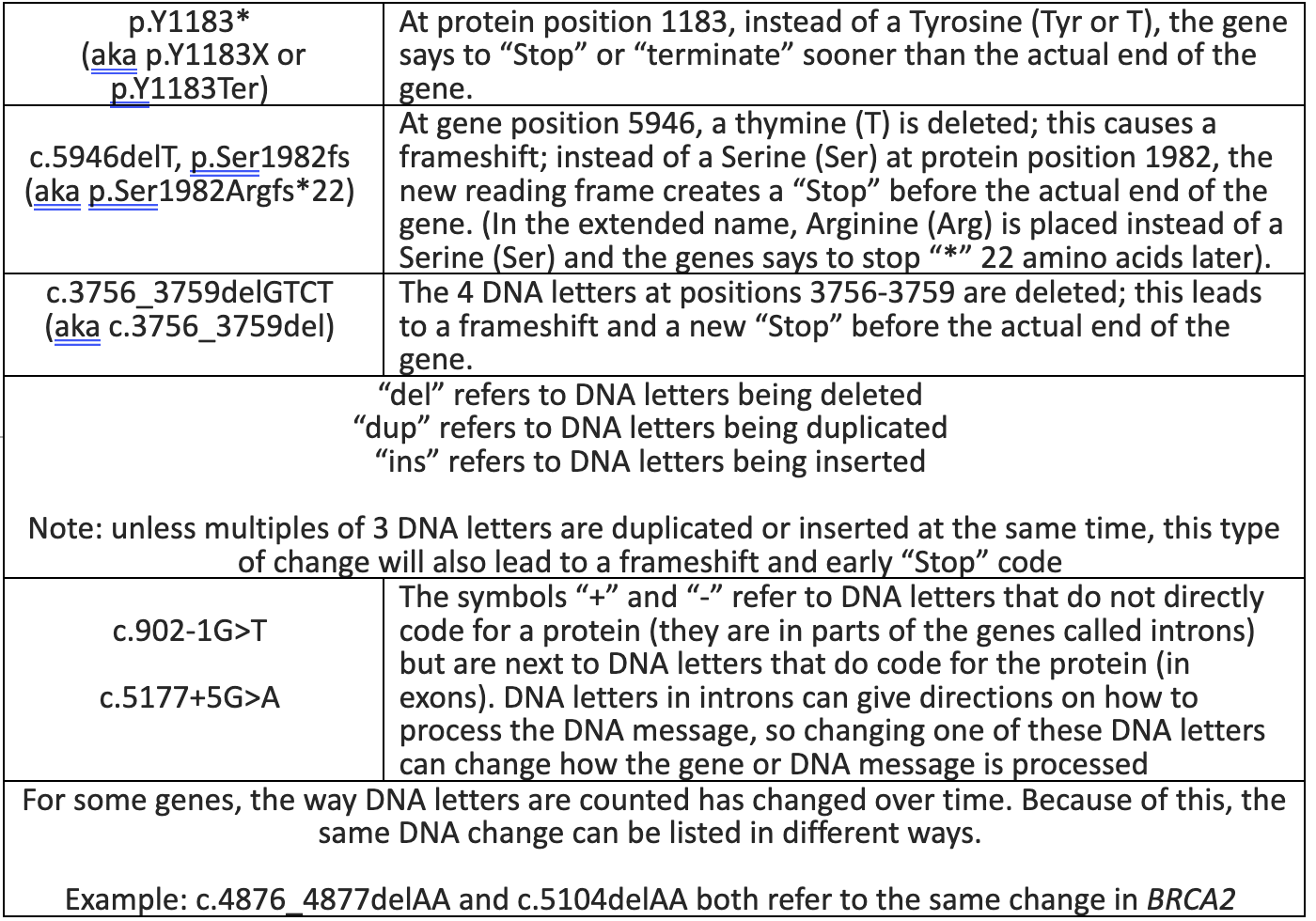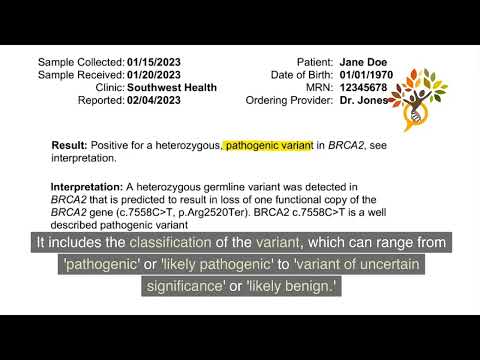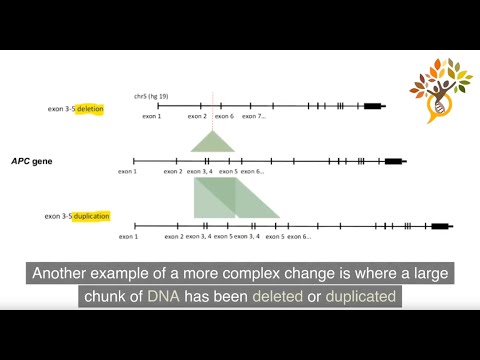What is My Variant?
Why it’s Important to Know Your Specific Variant
If you have had clinical genetic testing you may have received a report that lists a variant (or mutation) in a gene. Sometimes people only notice the gene, like BRCA1 or APC. The gene name gives a high-level view of what is not working. The specific variant will tell you and your doctor exactly what is wrong with the gene. The details of how genes work and how they can be broken can get very complicated. See our additional resources page to learn more about different genes and types of genetic variants.
Talking about which gene does not work is like saying, “My car is broken” or “My refrigerator won’t work.” Talking about this situation with others in the same situation can be extremely helpful; you can learn how to catch the bus or which foods will go bad first. Talking about which variant you have can be even more helpful because it provides more specific information. Like saying, “The timing belt on my car went out.” or “There was a ton of cat hair blocking my refrigerator's condenser coils.” Having more information can be more useful.
When someone else has the same rare genetic variant as you, you may share more than the same risk. Almost all mutations happened for the first time with a single person in history. That person could be alive today or could have lived hundreds of years ago. Once a mutation is passed down to a person’s children, it is usually called a variant. In common usage, both words “variant” and “mutation” mean almost the same thing. Everyone with your variant is probably related to the same ancestor, so your specific variant is a key to understanding your past. It is also key that you can use to help your relatives prevent disease before it happens.
Your Test Report
Your genetic test report will contain all the information you need to understand your variant. If you cannot find your report, ask your doctor or genetic counselor for help. This report also includes the information your relatives will need to get genetic testing. (You may also get a “family letter” or “results letter” that reviews what the test result means for you and your family – this is also good to keep, but it is important to have the actual test report.)
This test report will have important information, such as:
-
your name and date of birth
-
the provider who ordered the test
-
the name of the lab that performed the test
-
a tracking or accession number
This test report will also have the genetic finding, or “Result,” and a description of the medical significance of this genetic finding. The result includes the classification of the variant.
Understanding Your Result
Your test report gives different pieces of information that explain the change and the consequences of this change.
Here’s an example: BRCA1 c.4868C>G, p.Ala1623Gly
1) Gene name – the gene where the variant is located
This example: BRCA1.
2) Coding change – the DNA letter position in the gene and what is changed; DNA letters are numbered starting with “1” for the first DNA letter of the gene.
This example: “c.4868C>G” means the 4868th DNA letter of the BRCA1 gene should be a cytosine (C) but is changed to a guanine (G).
3) Protein change – the position in the protein and the effect of the DNA change. Each 3 DNA letters code or one amino acid.
This example: the 1623rd amino acid in the protein should be an Alanine (Ala) but is instead a Glycine (Gly).
Premature protein stop codons are coded “*”, “X”, or “Ter”.
There can also be missing (deleted) or extra (inserted) DNA letters. This can cause a significant change in how the codons are read.
For example, below is a set of five codons and how they change if an A is inserted:
THE CAT PET THE DOG
THE ACA TPE TTH EDO G
This type of change called a frameshift, changes all the codons after the insertion, which now code for incorrect amino acids. Frameshifts can lead to an early stop codon. A frameshift will be coded by an fs followed by how long it is before the next stop codon “*”.
More Examples
Some genetic variants are more complex than a substitution of one DNA letter or amino acid to another. Below are examples of different types of alterations and their meanings:




